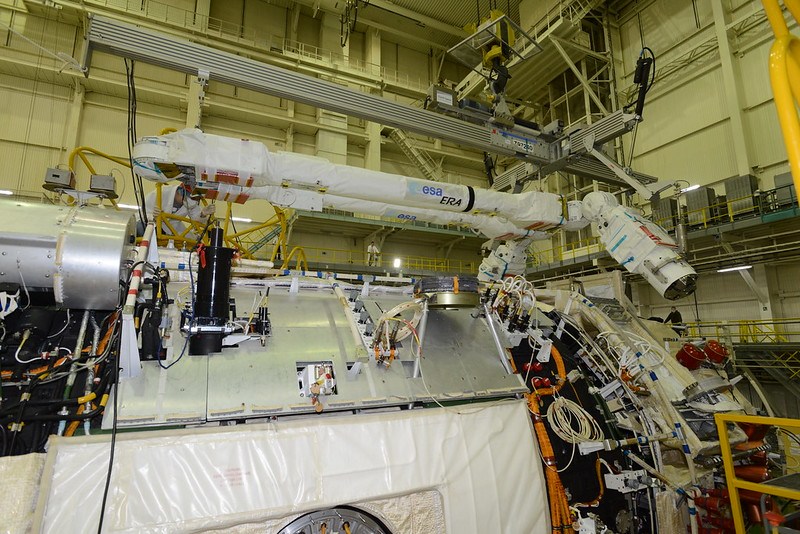The European Robotic Arm (ERA) that was launched into space eight days ago reached the International Space Station (ISS) on Thursday, at approximately 3:29 PM CEST.
The ERA was launched on a Proton rocket from the Baikonur Cosmodrome, in Kazakhstan, last Wednesday on 21 July, according to a press release from the European Space Agency (ESA).
The 11-metre-long robot travelled attached to what will be its home base – the Multipurpose Laboratory Module, also called ‘Nauka,’ ESA said.
The new robot arm is part of efforts to extend the life of the ISS, which is over two decades old now.
“Our home in space is constantly being improved,” said ESA Director of Human and Robotic Exploration David Parker.
“Europe’s Columbus lab is getting new science racks, ultra-fast data connections and external and internal platforms, commercially provided, for more users. ESA astronaut Thomas Pesquet has even been helping to upgrade the Station’s power with new solar arrays.”
The robotic arm, which looks a bit like a pair of compasses or a set of salad tongs, has an elbow, shoulders and wrists that help it move.
Its role will be to connect the Russian segment of the ISS with the rest of the space station.
The Space Station already has two robotic arms, according to ESA, and those Canadian and Japanese robots play a crucial role in helping berth spacecraft and transfer payloads and astronauts.
But neither of those arms can reach the Russian segment, which is where the ERA comes in.
ERA is the first robot capable of ‘walking’ around the Russian parts of the orbital complex, ESA explained, and will handle components up to 8,000 kg with 5 mm precision, in addition to transporting astronauts from one working site to another.
“Moving hand-over-hand around the Russian parts of the Station, the European Robotic Arm will bring more freedom, more flexibility and more skills to space operations,” said Parker.
“We are giving the Space Station a mid-life upgrade after 20 years in orbit through our Columbus 2030 programme – an opportunity to modernise space with a commercial approach.”
The launch and installation of the European Robotic Arm is a first for Europe and Russia in space, ESA says.
It took around 14 years for a consortium of 22 European companies from seven countries to build the robot.
The new module docked automatically to Zvezda, at the centre of the Russian segment of the ISS.
ESA astronaut Thomas Pesquet (France) received the robot arm and will help set it up.
Five spacewalks are planned to get ERA ready and perform its first space operations, some of which will be carried out by ESA astronauts Matthias Maurer (Germany) and Samantha Cristoforetti (Italy).
The crew can control the ERA from both inside and outside the International Space Station, a feature that neither of the other robotic arm offers.
During its first year on the Space Station, ERA’s prime tasks in orbit are to install a large radiator and set up the airlock for Nauka.
“The symbolic European-Russian handshake in space will help demonstrate autonomous and real-time telerobotic operations, key for future missions to the Moon and Mars,” ESA said.

